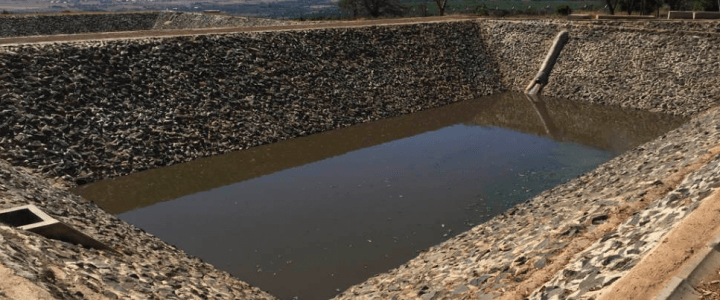Background
Rivalea (Australia) Pty Ltd is a leading Australian agri-business supplying approximately 20% of the domestic fresh pork market. The company is headquartered in Corowa NSW and has piggery operations at Corowa, Albury, Deniliquin, Bendigo and St Arnaud in western Victoria. Rivalea has stock feed mills and meat processing facilities in Corowa and Laverton Melbourne.
Rivalea’s operation are energy intensive both in the milling of feed, rearing of livestock and meat processing operations. The introduction of the Federal government carbon abatement programs and large increases in energy prices in recent years has incentivized the company to build out its own energy generation plant using on farm and plant resources.
The company has recognized for some time that biogas generated in the waste water treatment lagoons is a potential source of energy in the operations of the farm and processing facility.
In conjunction with various outside interests, the company has undertaken extensive research and feasibility studies for the capture and use of biogas over the last decade. For various reasons, many of these projects have not come to fruition however the large body of documentation and engineering work already undertaken provides a solid foundation for biogas energy use project design.
Rivalea has commenced the first stage of biogas recovery at Module 5 on the Corowa site. This stage included the construction of a 41ML effluent lagoon biogas collection cover and flare installed by September 2012. Gas collected from this system averages around 450m3/h with a methane content of 60-70%. Gas was flared for generation of carbon credits and data collection from 2012 with a 500-kVA generator installed in April 2017. A further 75ML lagoon and additional 1000 kVA of generator capacity has been approved for construction in 2018/19 at the Corowa site.
While the Corowa site is the largest resource and has the highest onsite energy demand behind the meter, the new project will largely exhaust any further opportunity at this site. The company has earmarked the Huntly piggery at Bendigo as having potential to recover biogas at the largest unit to offset energy costs and improve the environmental emissions from the site. This scope has been developed to investigate the feasibility of a project at Unit 6, Huntly piggery.
Scope of Works
The proposed Scope for a student project would encompass the following
- Familiarize with anaerobic digestion of waste water
- Characterize the waste water resource at the Huntly site
- Review available technologies i.e. covered ponds, tank digesters, etc.
- Develop models of performance of digesters
- Review electricity and gas use (Level 1 energy audit)
- Investigate biogas usage options onsite e.g., electricity generation, cogeneration (various technologies) or other options not previously considered.
- Recommend a biogas use strategy having regard to:
- the highest and best value use of the resource both at present and regarding foreseeable future energy market trends;
- Site layout and waste water flows, use of existing infrastructure and engineering limitations
- funding grants and finance available for ‘low carbon’ projects;
- opportunities to generate marketable credits for carbon offsets,
- renewable energy credits or energy efficiency,
- reduction of the sites overall carbon emissions
- Develop a business case including financial measures (payback, ROI, NPV)
Deliverables:
Final report detailing the business case
Presentation to Rivalea senior management
Resources:
Rivalea will provide assistance to the student/s conducting the study.
- Site visits to Corowa during the construction and commissioning of a covered lagoon and generator project.
- Site visits to the Huntly piggery
- Rivalea will cover the cost of any external laboratory results or transport of samples to RMIT labs.
- Access to previous commercial feasibility studies conducted for the company
- Mentoring and guidance to students
- Introduction to industry practitioners where feasible.

